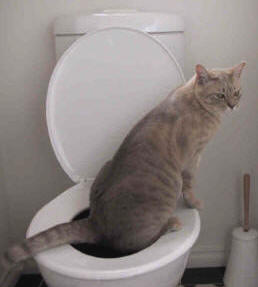The Consequences of Flushing Cat Poop Down Your Toilet - Protect Your Pipes
The Consequences of Flushing Cat Poop Down Your Toilet - Protect Your Pipes
Blog Article
This article in the next paragraphs on the subject of Can You Flush Cat Poop Down The Toilet? is incredibly engaging. Don't skip it.

Introduction
As pet cat owners, it's important to be mindful of how we take care of our feline friends' waste. While it may appear convenient to purge pet cat poop down the bathroom, this technique can have harmful consequences for both the setting and human health.
Alternatives to Flushing
The good news is, there are much safer and more responsible methods to take care of pet cat poop. Take into consideration the following options:
1. Scoop and Dispose in Trash
The most typical approach of throwing away cat poop is to scoop it right into an eco-friendly bag and throw it in the trash. Be sure to make use of a committed litter scoop and deal with the waste immediately.
2. Use Biodegradable Litter
Opt for eco-friendly cat trash made from products such as corn or wheat. These trashes are environmentally friendly and can be securely dealt with in the garbage.
3. Hide in the Yard
If you have a yard, think about hiding pet cat waste in a marked location far from veggie gardens and water sources. Make sure to dig deep enough to avoid contamination of groundwater.
4. Install a Pet Waste Disposal System
Invest in an animal waste disposal system especially developed for cat waste. These systems make use of enzymes to break down the waste, reducing odor and environmental effect.
Health Risks
In addition to ecological concerns, flushing feline waste can additionally position wellness threats to humans. Cat feces may contain Toxoplasma gondii, a bloodsucker that can trigger toxoplasmosis-- a possibly severe ailment, especially for expectant females and individuals with damaged immune systems.
Ecological Impact
Purging pet cat poop presents dangerous virus and parasites into the water supply, presenting a significant risk to aquatic ecological communities. These pollutants can adversely affect aquatic life and compromise water high quality.
Conclusion
Liable pet ownership expands beyond giving food and shelter-- it also involves appropriate waste administration. By avoiding flushing feline poop down the toilet and going with alternative disposal approaches, we can lessen our environmental footprint and secure human health and wellness.
Why Can’t I Flush Cat Poop?
It Spreads a Parasite
Cats are frequently infected with a parasite called toxoplasma gondii. The parasite causes an infection called toxoplasmosis. It is usually harmless to cats. The parasite only uses cat poop as a host for its eggs. Otherwise, the cat’s immune system usually keeps the infection at low enough levels to maintain its own health. But it does not stop the develop of eggs. These eggs are tiny and surprisingly tough. They may survive for a year before they begin to grow. But that’s the problem.
Our wastewater system is not designed to deal with toxoplasmosis eggs. Instead, most eggs will flush from your toilet into sewers and wastewater management plants. After the sewage is treated for many other harmful things in it, it is typically released into local rivers, lakes, or oceans. Here, the toxoplasmosis eggs can find new hosts, including starfish, crabs, otters, and many other wildlife. For many, this is a significant risk to their health. Toxoplasmosis can also end up infecting water sources that are important for agriculture, which means our deer, pigs, and sheep can get infected too.
Is There Risk to Humans?
There can be a risk to human life from flushing cat poop down the toilet. If you do so, the parasites from your cat’s poop can end up in shellfish, game animals, or livestock. If this meat is then served raw or undercooked, the people who eat it can get sick.
In fact, according to the CDC, 40 million people in the United States are infected with toxoplasma gondii. They get it from exposure to infected seafood, or from some kind of cat poop contamination, like drinking from a stream that is contaminated or touching anything that has come into contact with cat poop. That includes just cleaning a cat litter box.
Most people who get infected with these parasites will not develop any symptoms. However, for pregnant women or for those with compromised immune systems, the parasite can cause severe health problems.
How to Handle Cat Poop
The best way to handle cat poop is actually to clean the box more often. The eggs that the parasite sheds will not become active until one to five days after the cat poops. That means that if you clean daily, you’re much less likely to come into direct contact with infectious eggs.
That said, always dispose of cat poop in the garbage and not down the toilet. Wash your hands before and after you clean the litter box, and bring the bag of poop right outside to your garbage bins.
https://trenchlesssolutionsusa.com/why-cant-i-flush-cat-poop/

Hopefully you liked our article about How to Dispose of Cat Poop and Litter Without Plastic Bags. Thanks a ton for spending some time to read through our article. Are you aware of somebody who is enthusiastic about the niche? Why not share it. Thanks a lot for your time. Please come by our blog back soon.
Book Report this page